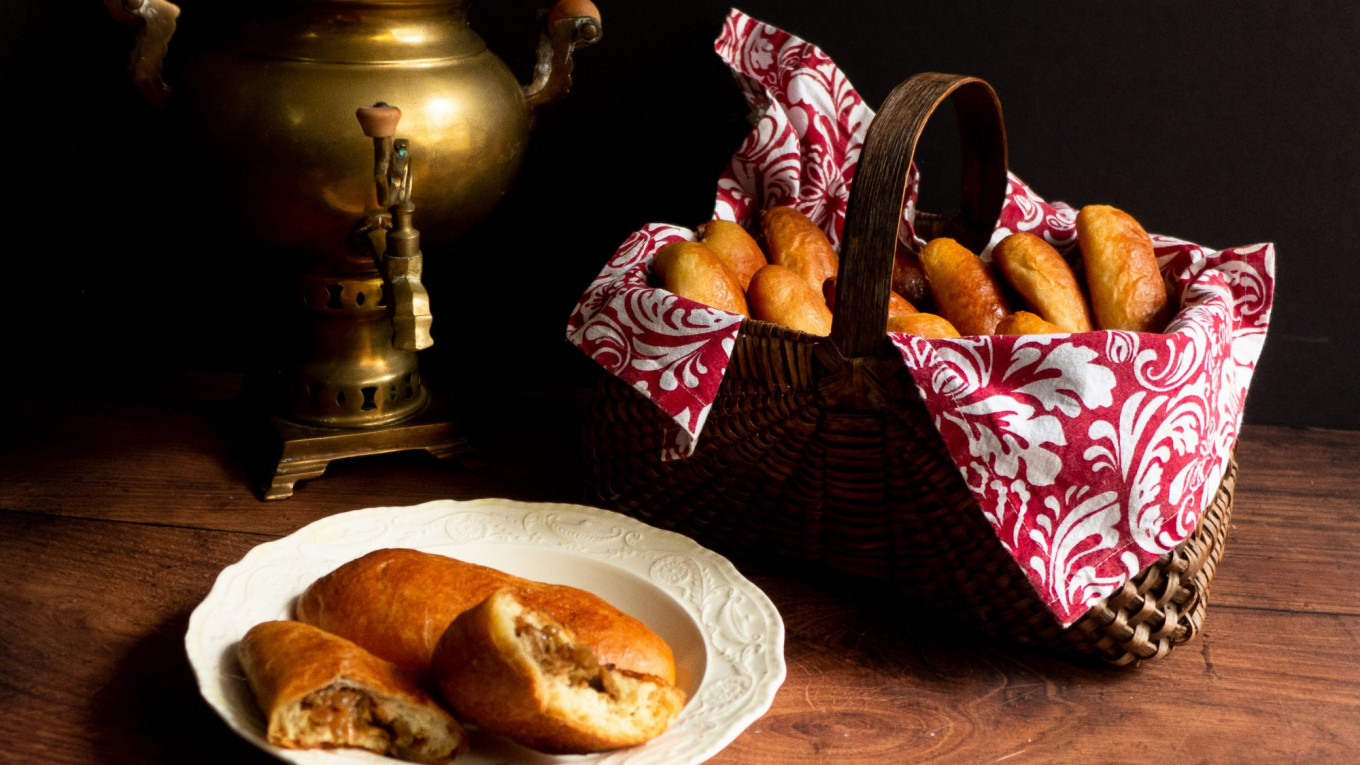I am very fortunate to live with a very patient and supportive husband, a man who claims not to mind living in a Test Kitchen most weekdays. He’s a really good sport about epic messes in the kitchen, cheerfully submits to having the same dish — albeit with slight tweaks — on multiple consecutive nights, and he’s always up for taste tests at funny hours of the day and night. But the thing I really appreciate is his constructive criticism:
“I’m not sure you’re quite there yet,” he will say if I’m wildly off the mark.
Imagine how welcome is his praise when I finally crack a Russian classic.
“No,” he says, “those are cutlets, cutlets,” or “now that is kvass, kvass.”
The repetition of the dish’s name is the equivalent of winning a James Beard award. Time to hang up my apron and tackle the mountain of dishes. I can go no further with the recipe.
The stakes could not have been higher this week as I took a deep breath and tackled one of the more iconic dishes in Russian culinary history: piroshki or little pastry. These pillowy soft buns, stuffed with sweet or savory fillings, are deeply satisfying and supremely addictive. Piroshki occupy a special place in Russian cuisine: depending on the filling, they are suitable for just about any meal or snack, though it is luncheon where piroshki really come into their own alongside the indispensable bowl of Russian soup.
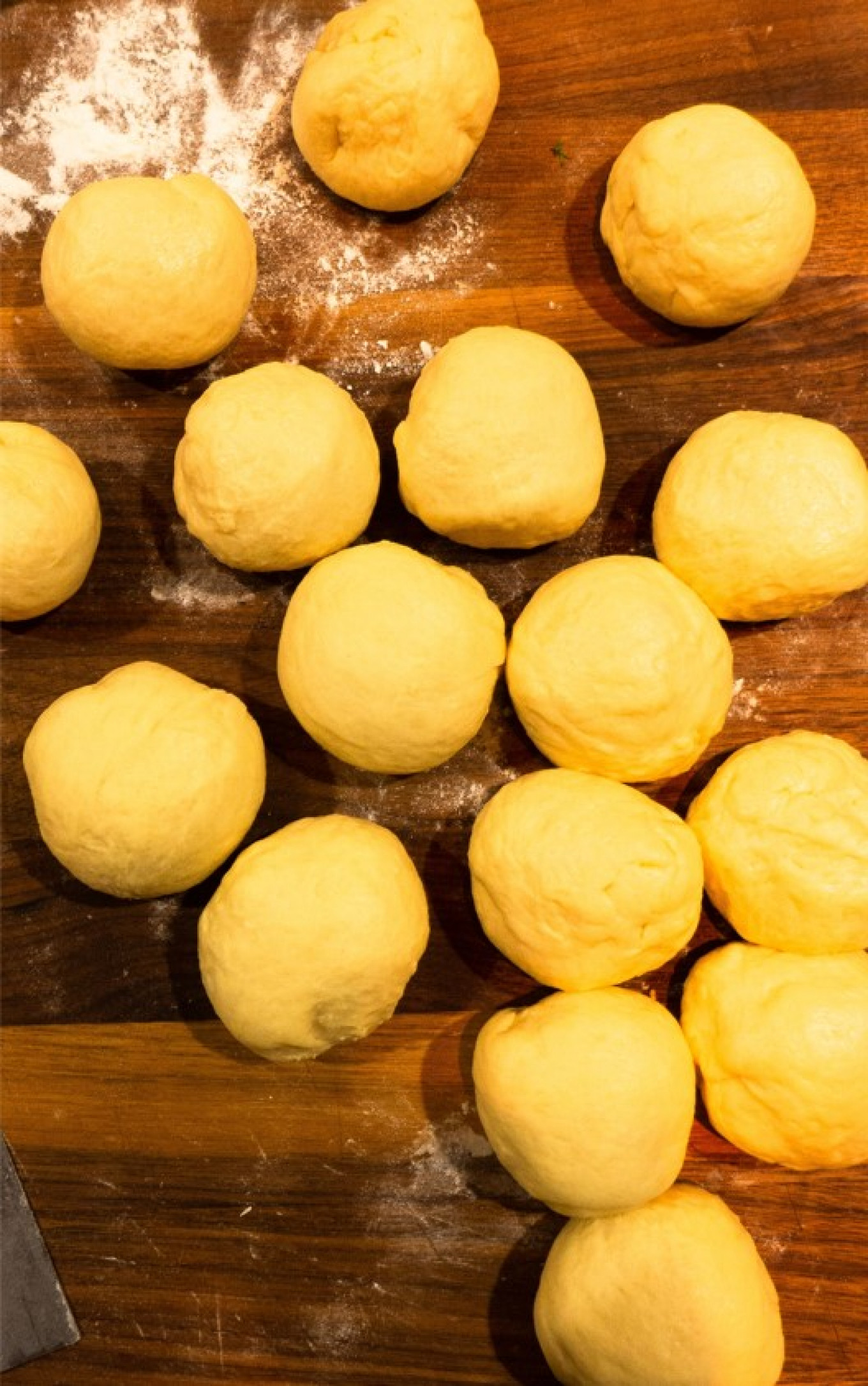
Lockdown cured me of my crippling yeast phobia, but I still spend far too much time test-driving any kind of yeast dough. But I knew I was on the right track when the kitchen was filled with a heady odor of yeasty perfection, and I could see the piroshki through the oven door, plumping up and turning that perfect golden hue.
The yeasty smell transported me to a surprising place: a Moscow perekhod or underpass circa 1997. These subterranean walkways under the busy multi-lane streets of Moscow are an essential part of pedestrian life in the Russian capital. During the messy transition from socialism to capitalism, the perekhods became retail testing grounds, their once echoing emptiness suddenly filled with tiny kiosks fronted by gummy glass windows displaying knock off designer purses, cheap clothing from Turkey and India, really (really, really) bad art, sex toys, pirate videos, alternative medicine, and what I came to think of as “Potemkin piroshki.” The perekhods had the same signature smell of the Metro: an acrid mix of alcohol fumes, unwashed humanity, damp wool, urine, and decades of cigarette smoke. But from about 1995 onward, on top of the Metro smell was an intriguing yeasty smell, most probably piped into the perekhod to entice customers to the baked goods kiosk, where appetizing piroshki glinted in the lurid florescent light.
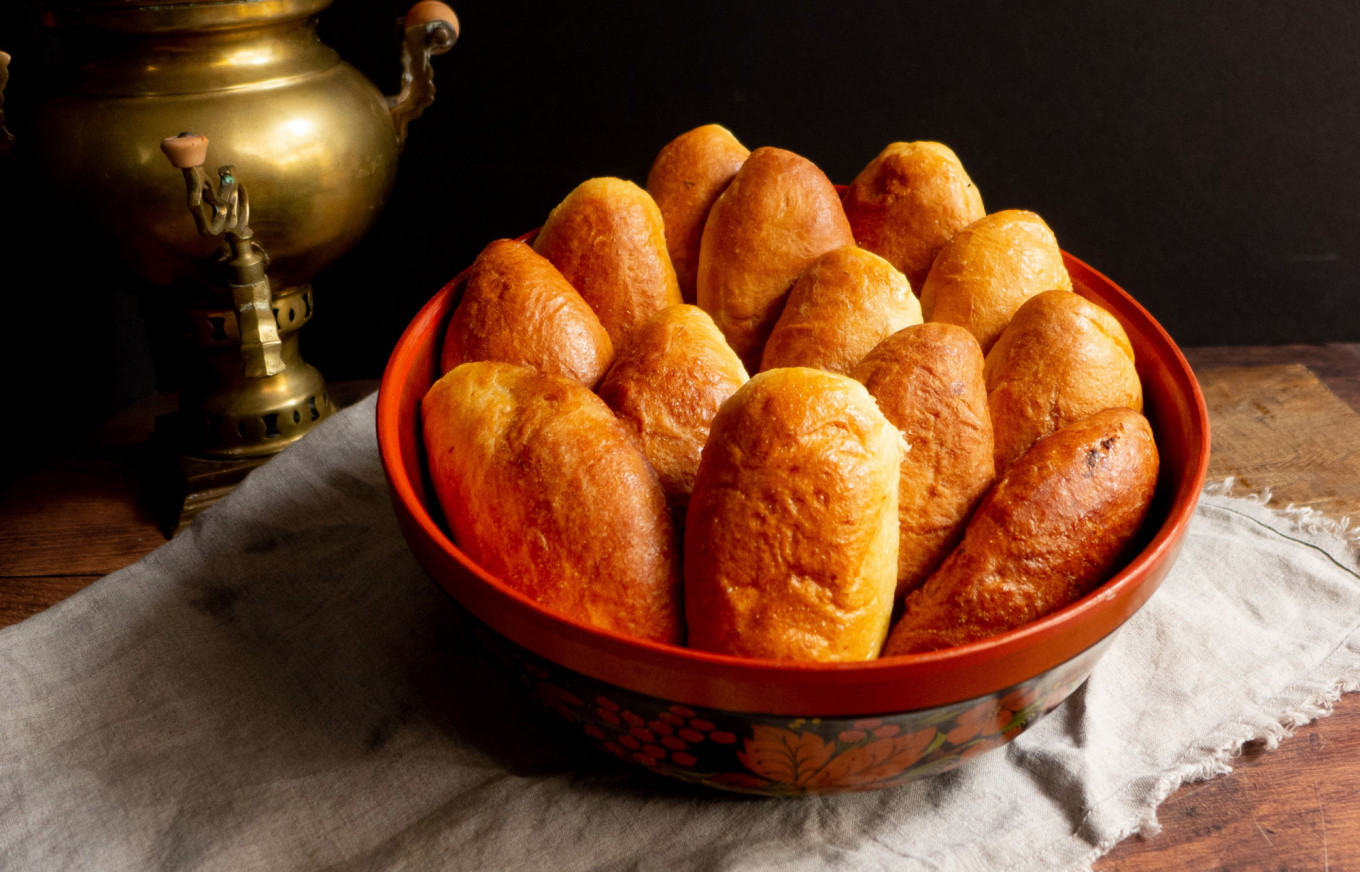
I fell for this ruse precisely once and never again. I bought what was advertised as a cabbage piroshok, but this was possible to confirm because if there was some sort of filling in the piroshok, positive identification was only possible with a microscope. The dough was rubbery and it tasted just like I imagined a pencil eraser might. Perhaps the lingering memory of the Potemkin pirozhok contributed to my jitters about making them myself. Good piroshki boast bountiful amounts of filling, be it cabbage, mushroom, meat, egg and onion, or sweet combinations of fruit. The dough should be light but flavorful, the outside slightly crisp and very buttery.
I filled my first batch of piroshki with mushrooms, and I waited impatiently as they cooled for the requisite 15 minutes. I broke one in half and inhaled a boletic blast of mushroom, thyme, and onion. I handed one half to my husband and bit my lip as he put on his tasting face and chewed thoughtfully.
“No,” he said.
Why do Russians always say, “no” when they mean “yes”?
“No,” he repeated, “piroshok, piroshok.”
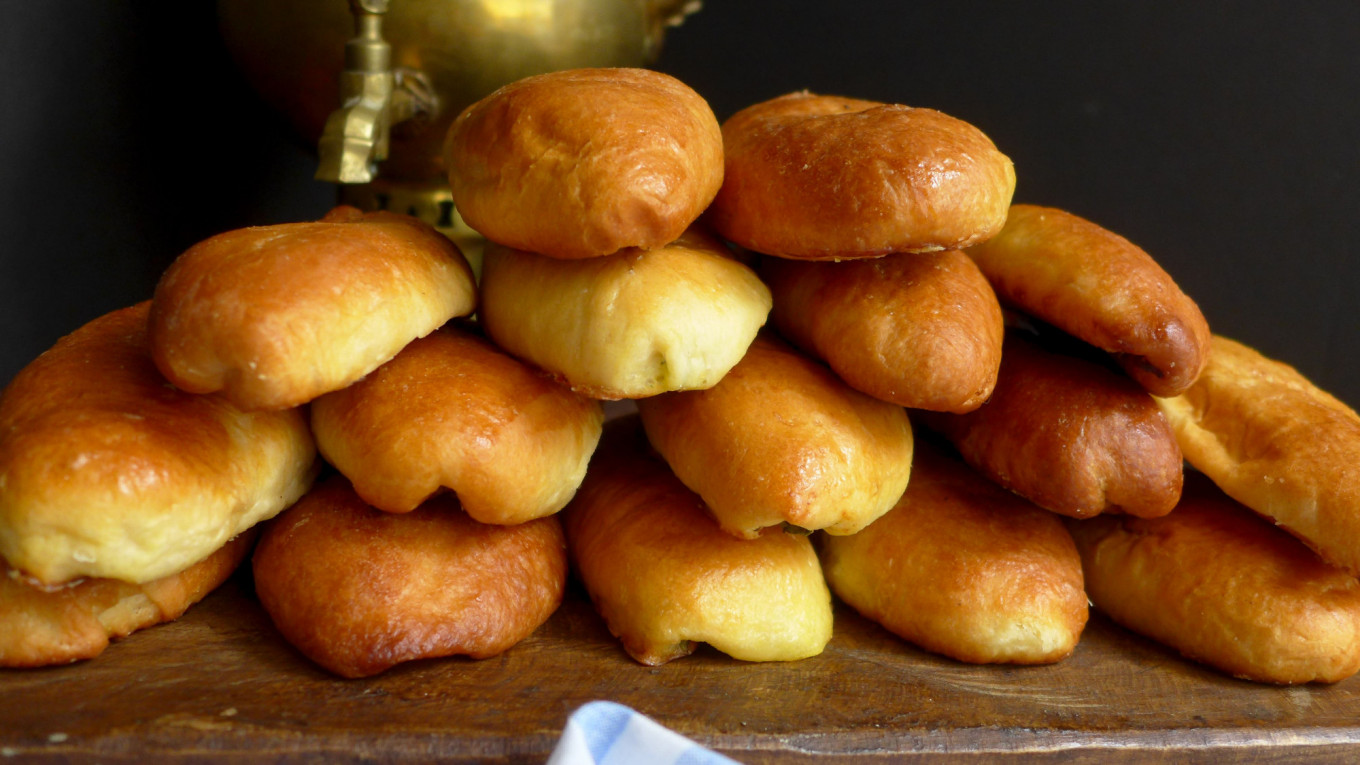
Piroshki dough and three fillings
Dough
Yield: 8-12 piroshki
Ingredients
- ½ cup (120 ml) heavy cream
- 1 cup (236 ml) buttermilk
- 2 standard packages (14 grams) active dry yeast
- 1 ½ tsp salt
- 1 oz (30 grams) sugar
- 3 Tbsp (40 grams) butter, melted and cooled to room temperature
- 2 large egg yolks
- 3 ½ cups plus 1 Tbsp (450 grams) all-purpose flour
Other ingredients
- 2 Tbsp vegetable oil
- More flour for kneading
- 1 egg
- 1 Tbsp heavy cream
- 3 Tbsp butter, melted
Preparation
- Whisk together the heavy cream and buttermilk, then heat it to 110ºF (43ºC). Whisk in the yeast, cover the mixture and set aside in a warm, draft-free place for 10-15 minutes to proof. Add the egg yolks and melted butter and whisk to combine.
- Place the flour, sugar, and salt in the bowl of a standing mixer with a dough hook attached. Create a well in the center, then pour in half of the liquid mixture. Begin kneading on low. After 3-4 minutes, add the rest of the liquid, and raise the speed to medium low or # 2 on a Kitchen Aid Mixer. Knead for 7-8 minutes until the dough has formed into a loose, very elastic ball.
- Coat the inside of a non-reactive bowl at least twice the size of the dough with oil. Place the dough in the bowl, cover, and set aside in a warm place with no drafts to proof for 90 minutes. After 45 minutes, punch the dough down and set it to rise again.
- Preheat the oven to 350ºF (180ºC) and line a large baking sheet with parchment paper.
- Lightly flour your work surface, tip the dough out and knead it a few times to bring it together. Divide the dough into four equal parts, then each fourth into three parts. Use a scale to ensure each of the portions is equal in size.
- Form each dough portion into a ball by pulling the top layer to the bottom, then rolling it into a ball. Cover the dough you aren’t working with, so it does not dry out
- Roll each piece of dough into an elongated oval. Place approximately 2 tablespoons of cooled filling in the center of the oval, then pull the long sides together and pinch firmly to create a seal. Ensure that the piroshok is completely sealed or the filling will escape. Place the piroshok seam side down on the parchment paper at 1 ½ inch intervals. Cover the tray and proof for 30 minutes.
- While the piroshki are proofing, whisk together one egg and 1 tablespoon of heavy cream. Brush the proofed piroshki with the egg wash and pop them into the oven. Bake for 30 minutes until the piroshki are golden brown. Brush the piroshki with melted butter immediately after you remove the tray from the oven. Cool on a rack for 10-15 minutes before enjoying.
- Piroshki can be stored in a plastic container or bag in the refrigerator for 5-6 days. Reheat them in the oven or microwave to fully enjoy.
Dough recipe adapted from Helen Rennie.
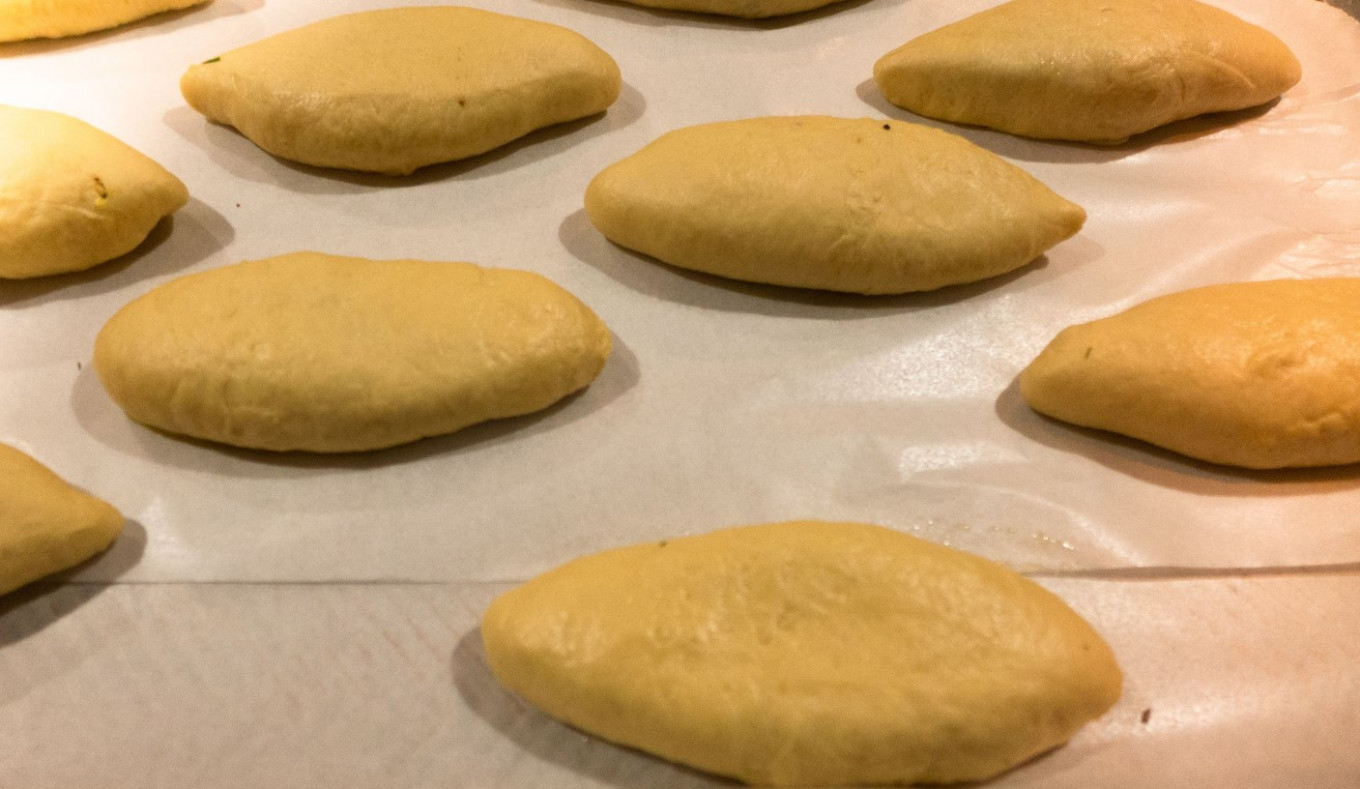
Mushroom Filling for Piroshki
Ingredients
- 3 Tbsp butter
- 4 cups (600 grams) cleaned and sliced mushrooms
- ½ tsp nutmeg
- 1 tsp salt
- 1 shallot, finely minced
- ¼ cup (60 ml) Madeira
- 1 tsp white pepper
- ¼ cup (60 ml) very dry ricotta or tvorog
- 2 Tbsp fresh tarragon, finely minced
Preparation
- Melt two tablespoons of the butter in a large sauté pan. When the butter is sizzling, sauté the mushrooms over medium high heat until they leach their liquid. Cover the pan, reduce the heat to medium and cook until the mushrooms have reabsorbed their liquid. Uncover the pan and brown the mushrooms for another 3-4 minutes until they turn dark brown. Remove the mushrooms to a bowl and set aside.
- Wipe out the saucepan and return to medium heat. Melt the remaining butter and sauté the shallots until they are golden and limp. Return the mushrooms to the pan, and add the Madeira, salt, white pepper, and nutmeg. Cook until all the liquid has been absorbed.
- Cool the mixture to room temperature, then pulse in a food processor fitted with a steel blade with the ricotta and tarragon until the mixture is combined but still slightly chunky. Chill for at least 2 hours before using.
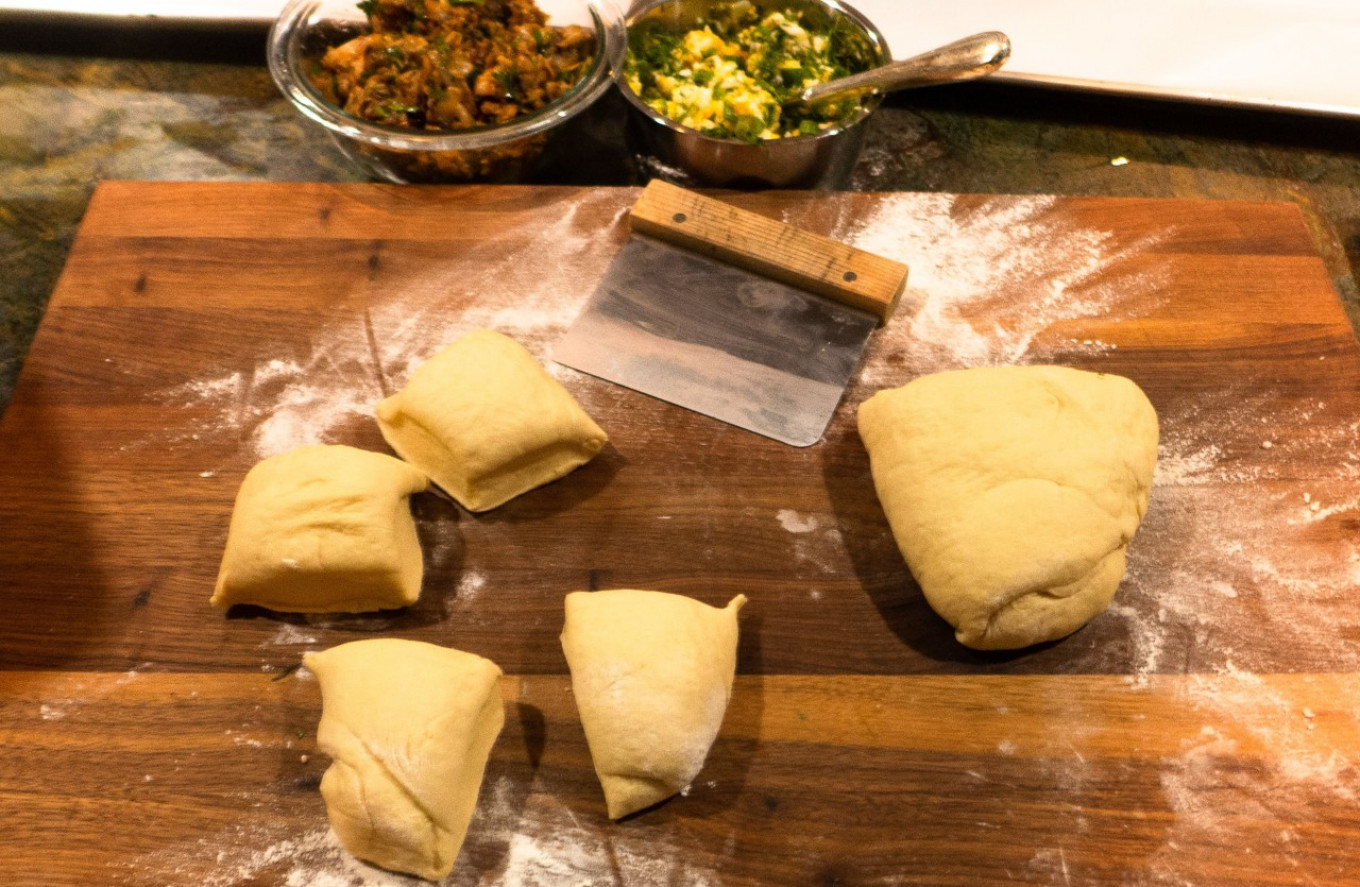
Classic Cabbage Filling for Piroshki
Ingredients
- ¼ cup (60 ml) olive oil
- 3 cups (700 ml) shredded cabbage
- 2 carrots, peeled and shredded on the large side of box grater
- Half a yellow onion, peeled and finely minced
- 2 tsp caraway seeds
- 1 tsp salt
- ½ tsp freshly ground black pepper
- ⅔ cup (156 ml) fresh parsley, finely minced
- ½ cup (120 ml) sauerkraut with juice
Preparation
- In a large sauté pan or Dutch oven, heat the oil over medium heat. When the oil shimmers, add the onions and sauté until golden. Add the carrots and sauté until they are limp. Add the cabbage and toss to combine it with the onion and carrot mixture.
- Cover and cook for 10 minutes, checking frequently to ensure that the cabbage does not scorch on the bottom. After 10 minutes, remove the lid and continue to cook until the cabbage is browned and has lost all of its water volume. Add in the sauerkraut, salt, and black pepper and cook another 2-3 minutes until all the liquid has disappeared.
- Toast the caraway seeds and add to the cabbage mixture when it is done. Cool the mixture to room temperature, taste and adjust seasonings. Fold in the fresh parsley. Chill at least 2 hours before using.
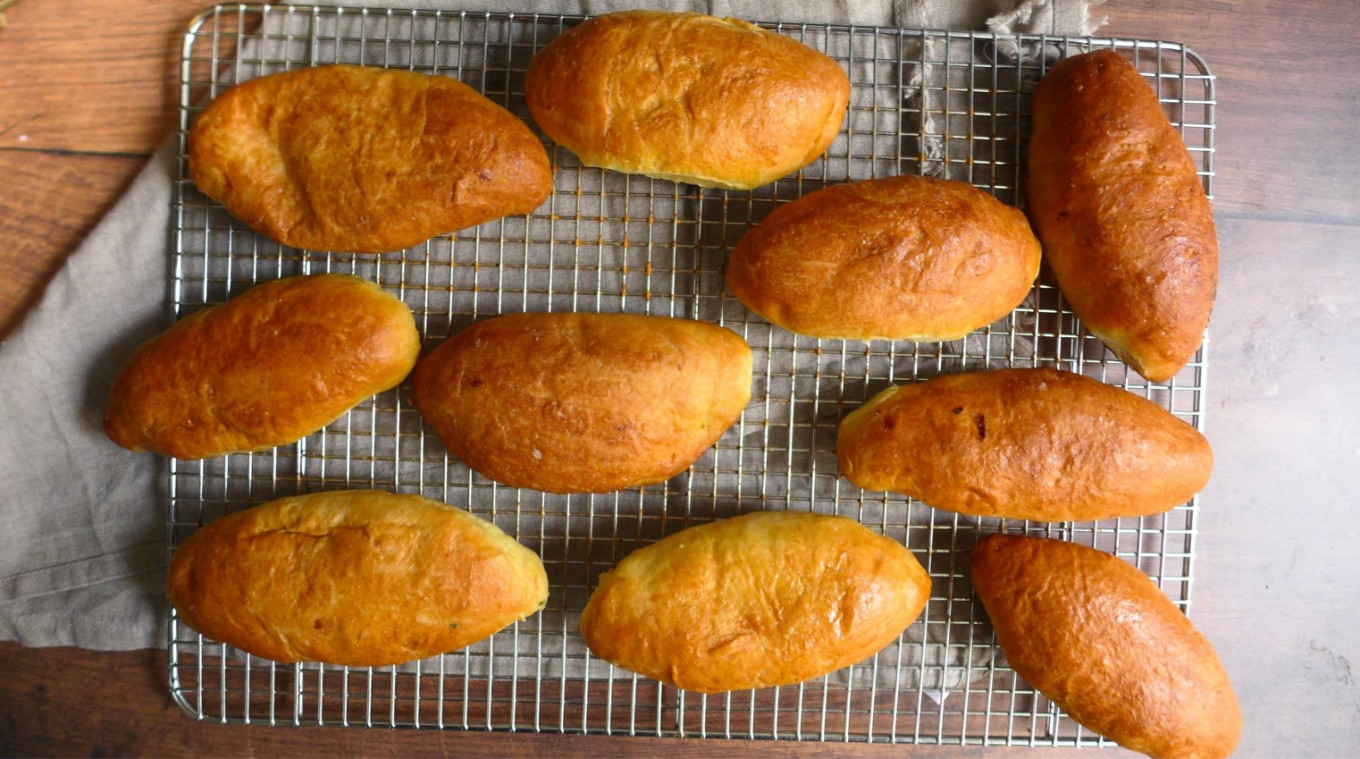
Egg, Horseradish, and Green Onion Filling for Piroshki
Ingredients
- 3 jammy hard-boiled eggs, peeled and roughly chopped into chunks
- 1 Tbsp prepared horseradish
- 3 green onions, finely sliced on the diagonal
- 1 Tbsp capers, slightly mashed with the back of a fork
- ½ cup (120 ml) chopped fresh dill
- 1 Tbsp sour cream
- 1 tsp hot sauce (optional)
Preparation
- Fold together all the ingredients gently, taking care to keep the eggs in chunks.
- Refrigerate at least 2 hours before use.
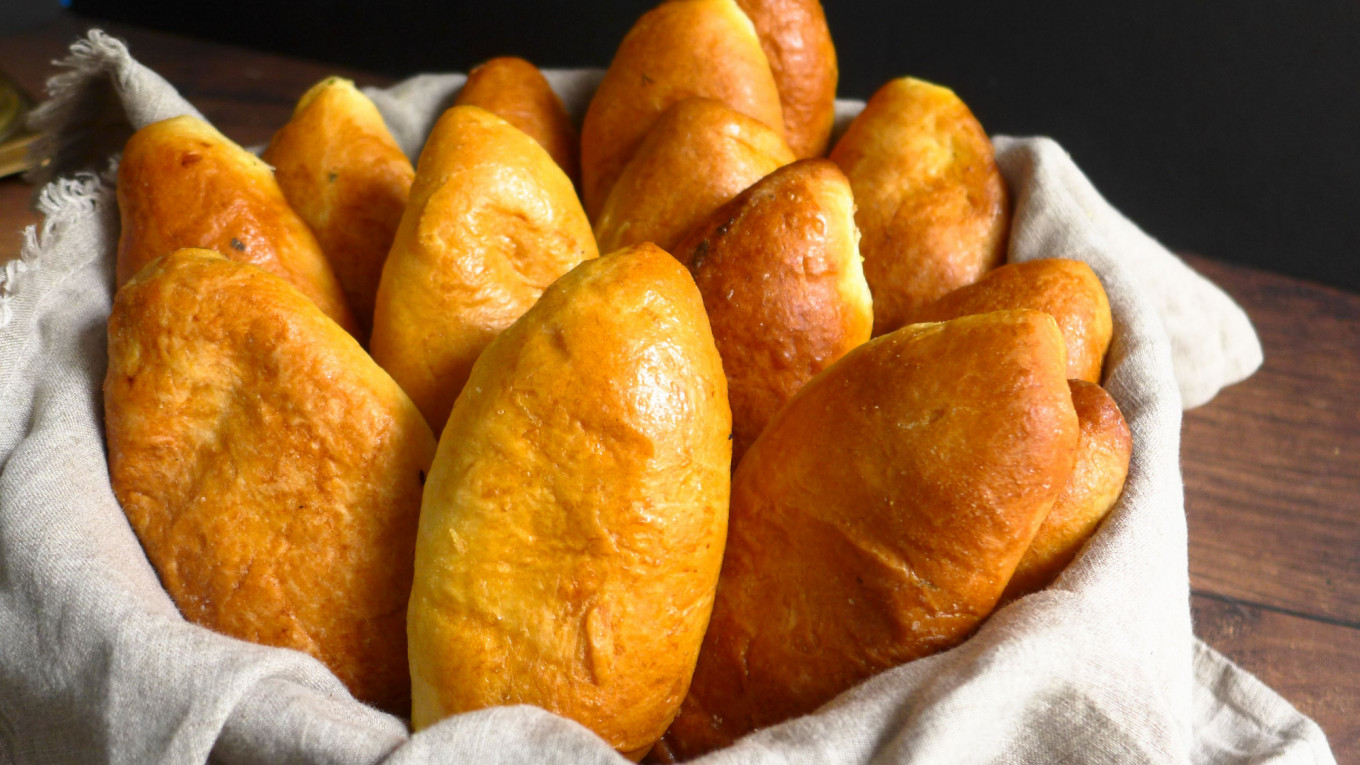
A Message from The Moscow Times:
Dear readers,
We are facing unprecedented challenges. Russia's Prosecutor General's Office has designated The Moscow Times as an "undesirable" organization, criminalizing our work and putting our staff at risk of prosecution. This follows our earlier unjust labeling as a "foreign agent."
These actions are direct attempts to silence independent journalism in Russia. The authorities claim our work "discredits the decisions of the Russian leadership." We see things differently: we strive to provide accurate, unbiased reporting on Russia.
We, the journalists of The Moscow Times, refuse to be silenced. But to continue our work, we need your help.
Your support, no matter how small, makes a world of difference. If you can, please support us monthly starting from just $2. It's quick to set up, and every contribution makes a significant impact.
By supporting The Moscow Times, you're defending open, independent journalism in the face of repression. Thank you for standing with us.
Remind me later.



